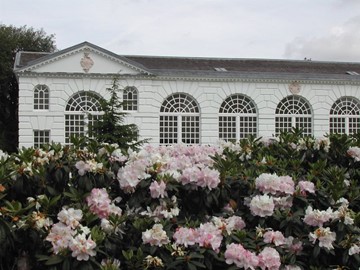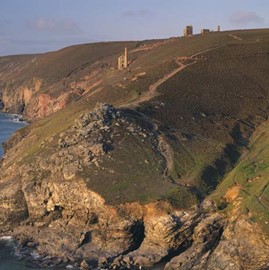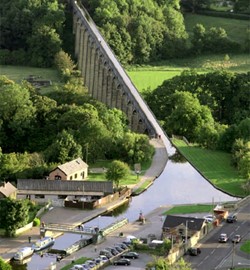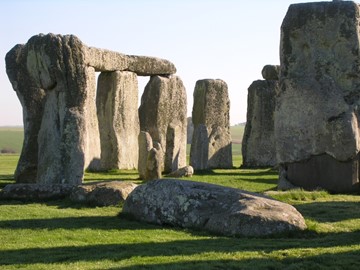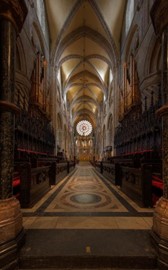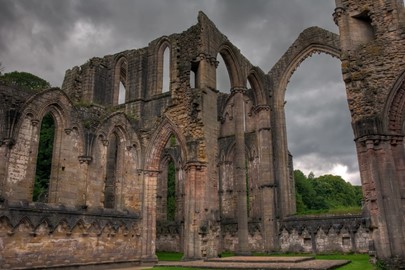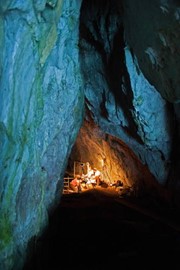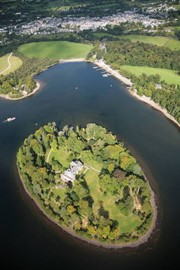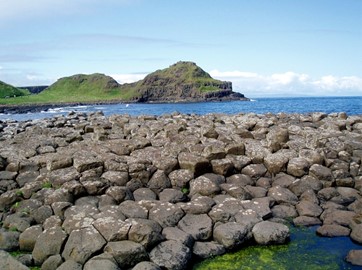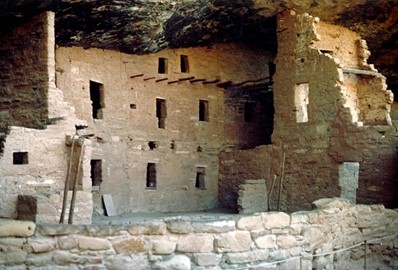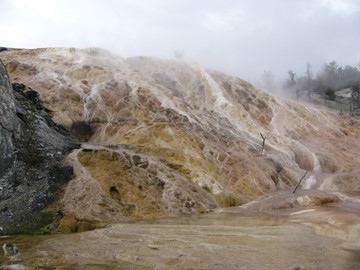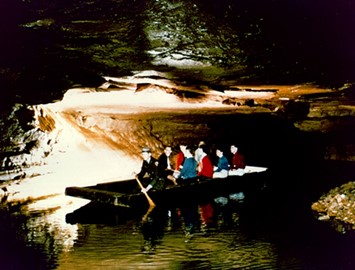region :: europe and north america
Saltaire
Saltaire is a UNESCO World Heritage Site in the UK, recognized for its well-preserved Victorian industrial village. Built in the 19th century by philanthropist Titus Salt, it features a model community with workers’ housing, a mill, and public buildings designed to improve living conditions during the Industrial Revolution. The site showcases Italianate architecture and urban planning, reflecting a blend of functionality and aesthetic appeal. Today, it stands as a testament to social reform and industrial h... Read More
Dorset and East Devon Coast
This UNESCO World Heritage site, often called the Jurassic Coast, stretches along 95 miles of stunning coastline in southern England. It’s renowned for its geological significance, showcasing 185 million years of Earth’s history through dramatic cliffs, fossil-rich beaches, and unique rock formations. The area attracts scientists, hikers, and nature enthusiasts eager to explore its ancient landscapes and uncover traces of prehistoric life. Its outstanding universal value lies in its contribution to understa... Read More
Derwent Valley Mills
Derwent Valley Mills, a UNESCO World Heritage Site, is a historic industrial landscape recognized for its pioneering role in the Industrial Revolution. This site showcases a series of 18th- and 19th-century cotton mills, powered by water, that marked the shift from manual to mechanized production. The well-preserved mills, workers' housing, and water management systems illustrate the technological and social innovations that shaped modern industry. It stands as a testament to the birth of the factory system... Read More
Kew Gardens
The Royal Botanic Gardens, Kew, a UNESCO World Heritage site in the UK, is a historic botanical garden renowned for its extensive plant collections and scientific research. Established in 1759, it houses over 50,000 species of plants, including rare and endangered varieties, within its beautifully landscaped grounds. Kew also features iconic structures like the Palm House and the Temperate House, alongside the world’s largest herbarium, making it a global leader in plant conservation and biodiversity studie... Read More
Cornwall and West Devon
This UNESCO World Heritage site in the UK is renowned for its historical significance and natural beauty. It features a dramatic landscape shaped by centuries of industrial mining, with remnants of engine houses, chimneys, and mineral-rich cliffs that highlight its pioneering role in the Industrial Revolution. The site also includes a world-class botanical garden, showcasing an extensive collection of plants from across the globe within iconic glasshouses. Together, these elements reflect a unique blend of ... Read More
Pontcysyllte Aqueduct and Canal
The Pontcysyllte Aqueduct and Canal, a UNESCO World Heritage site in the UK, is an impressive feat of 18th-century engineering designed by Thomas Telford. This 11-mile-long canal features the iconic Pontcysyllte Aqueduct, a 126-foot-high cast iron and stone structure that carries the waterway over a river valley, making it the tallest navigable aqueduct in the world. Recognized for its historical and architectural significance, the site exemplifies the ingenuity of the Industrial Revolution and attracts vis... Read More
Stonehenge and Avebury
Stonehenge and Avebury, a UNESCO World Heritage site in the UK, are renowned prehistoric monuments. Stonehenge, a circular arrangement of massive standing stones, dates back to around 3000 BCE and is celebrated for its precise engineering and mysterious purpose, possibly linked to astronomical observations. Avebury, one of the largest Neolithic stone circles in Europe, features a vast ring of stones enclosing a village, constructed around 2600 BCE, and is associated with ancient rituals and gatherings. Toge... Read More
Durham Castle and Cathedral
Durham Castle and Cathedral, a UNESCO World Heritage site, is an iconic historic landmark in the UK, renowned for its Norman architecture and cultural significance. The cathedral, constructed in the late 11th and early 12th centuries, stands as one of the finest examples of Romanesque design, featuring a striking tower and intricate stone carvings. Adjacent to it, the castle, originally built as a fortress in the 11th century, later served as a residence for bishops and now houses university students, blend... Read More
Westminster
The Palace of Westminster and Westminster Abbey, a UNESCO World Heritage site in the United Kingdom, form a historic architectural complex renowned for its cultural and political significance. The Palace, with its iconic Gothic design and the famous clock tower housing Big Ben, serves as the seat of the UK Parliament, reflecting centuries of legislative tradition. Adjacent Westminster Abbey, a masterpiece of medieval architecture, has been a site of royal coronations, weddings, and burials since the 11th ce... Read More
Studley Royal Park
Studley Royal Park, a UNESCO World Heritage site in the UK, is an exquisite 18th-century landscaped garden renowned for its elegant water features, manicured lawns, and historic architecture. The park encompasses the ruins of Fountains Abbey, a magnificent 12th-century Cistercian monastery, seamlessly blending natural beauty with cultural heritage. Its Georgian water garden, complete with canals, cascades, and classical statues, reflects the grandeur of its aristocratic origins. This harmonious estate stand... Read More
Forth Bridge
The Forth Bridge, a UNESCO World Heritage Site, is an iconic railway bridge completed in 1890, renowned for its distinctive red cantilever design and engineering innovation. Spanning the Firth of Forth, it was the world’s longest single cantilever bridge at the time, stretching over 2.5 kilometers with a maximum height of 110 meters above the water. Designed by Sir John Fowler and Sir Benjamin Baker, it remains a vital transportation link and a symbol of Victorian-era industrial achievement. Its robust stee... Read More
Gorham's Cave
Gorham's Cave Complex, a UNESCO World Heritage Site on the eastern side of the Rock of Gibraltar, is a significant archaeological location featuring four sea caves that reveal over 100,000 years of Neanderthal occupation. The site offers exceptional evidence of Neanderthal cultural traditions, including hunting practices, use of feathers for ornamentation, and abstract rock engravings, alongside insights into early modern human activity. Its scientific importance lies in contributing to our understanding of... Read More
Neolithic Orkney
The Heart of Neolithic Orkney is a UNESCO World Heritage site featuring a remarkable collection of prehistoric monuments. This archaeological treasure trove includes a well-preserved stone village, a mighty stone circle, and an impressive chambered tomb, all dating back over 5,000 years. These ancient structures offer a fascinating glimpse into the lives and beliefs of Neolithic people, showcasing their architectural prowess and cultural sophistication.
English Lake District
The English Lake District, a UNESCO World Heritage site in the UK, is renowned for its stunning natural beauty, featuring dramatic fells, serene lakes, and charming villages. This picturesque region has inspired poets, writers, and artists for centuries, including William Wordsworth and Beatrix Potter. Its rugged terrain offers a haven for outdoor enthusiasts, with opportunities for hiking, boating, and exploring historic sites. Recognized for its cultural and environmental significance, it remains a treasu... Read More
Giant's Causeway
The Giant's Causeway and Causeway Coast, a UNESCO World Heritage site, is renowned for its unique geological formations and stunning coastal scenery. This natural wonder features approximately 40,000 interlocking basalt columns, formed millions of years ago by volcanic activity, creating a dramatic landscape of hexagonal stones. The site also includes picturesque cliffs, bays, and beaches, attracting visitors for its beauty and scientific significance. Rich in mythology, it’s famously linked to the legend o... Read More
St. Kilda
St. Kilda, a UNESCO World Heritage site in the UK, is a remote archipelago renowned for its dramatic cliffs, abundant seabird colonies, and unique cultural history. Evacuated in 1930, it preserves evidence of over 2,000 years of human occupation, including ancient stone structures and a medieval village. Its isolation in the North Atlantic has fostered a pristine ecosystem, making it a critical haven for species like puffins and gannets. Today, it stands as a testament to both natural beauty and resilient h... Read More
Mesa Verde
Mesa Verde National Park, a UNESCO World Heritage Site in the United States, preserves the ancient cliff dwellings and archaeological treasures of the Ancestral Puebloans, who thrived there from around 600 to 1300 CE. The park showcases over 4,000 sites, including well-preserved stone villages built into cliff alcoves, offering a glimpse into their sophisticated culture and architecture. It serves as a vital link to understanding the history and resilience of Indigenous peoples in the region, with its drama... Read More
Yellowstone
Yellowstone National Park, a UNESCO World Heritage site in the United States, is renowned for its geothermal wonders, including the famous Old Faithful geyser and vibrant hot springs. Established in 1872 as the world’s first national park, it boasts diverse wildlife such as grizzly bears, wolves, and bison, thriving amidst its stunning landscapes. The park also features dramatic canyons, alpine rivers, and vast forests, making it a natural treasure of global significance.
Grand Canyon
Grand Canyon National Park, a UNESCO World Heritage site in the USA, is renowned for its vast, colorful canyon carved by the Colorado River over millions of years. It showcases stunning geological formations, with layers of rock revealing Earth's history, and offers breathtaking vistas that attract millions of visitors annually. The park also preserves diverse ecosystems, rare wildlife, and significant cultural heritage tied to Indigenous peoples.
Everglades
Everglades National Park, a UNESCO World Heritage Site in the USA, is a vast subtropical wilderness renowned for its unique ecosystem. It serves as a critical habitat for numerous rare and endangered species, including the manatee, American crocodile, and Florida panther. The park features a mix of freshwater sloughs, marl prairies, and coastal mangroves, supporting a rich biodiversity. Its significance lies in its role as a vital watershed and its preservation of one of the world’s most distinctive natural... Read More
Independence Hall
Independence Hall, a UNESCO World Heritage site in the United States, is a historic landmark where the Declaration of Independence was adopted in 1776 and the U.S. Constitution was drafted in 1787. Constructed between 1732 and 1753, this Georgian-style brick building served as the meeting place for the Second Continental Congress and the Constitutional Convention. Today, it stands as a symbol of American democracy and is preserved within a national historical park, offering visitors a glimpse into the natio... Read More
Redwood
Redwood National and State Parks, a UNESCO World Heritage site in the United States, is renowned for its towering ancient redwood trees, some of the tallest and oldest living organisms on Earth. This protected coastal region features diverse ecosystems, including rugged shorelines, rivers, and dense forests that support a rich variety of wildlife, such as black bears, elk, and rare species like the northern spotted owl. Established to preserve these natural wonders, the parks offer a glimpse into an prehist... Read More
Mammoth Cave
Mammoth Cave National Park, a UNESCO World Heritage Site in the United States, is renowned for its extensive underground labyrinth, recognized as the world's longest known cave system. This natural wonder features stunning geological formations, including stalactites, stalagmites, and vast chambers, formed over millions of years through limestone erosion. The park also preserves a rich biodiversity, with unique cave-adapted species and scenic surface landscapes, offering visitors a glimpse into both natural... Read More
Olympic
Olympic National Park, a UNESCO World Heritage site in the United States, is renowned for its diverse ecosystems, encompassing rugged coastlines, temperate rainforests, and glaciated mountains. The park is home to unique flora and fauna, including the iconic Roosevelt elk and ancient Sitka spruce trees. Visitors can explore its pristine wilderness through hiking trails, scenic drives, and coastal beaches, offering a glimpse into one of North America's most ecologically rich landscapes.
Great Smoky Mountains
Great Smoky Mountains, a UNESCO World Heritage Site in the USA, is renowned for its rich biodiversity and stunning natural landscapes. This national park features ancient mountains, dense forests, and a variety of plant and animal species, many of which are unique to the region. Its cultural significance is tied to the history of the Cherokee people and early European settlers, preserved through historic structures and traditions. The site attracts millions of visitors annually for its scenic beauty and eco... Read More



